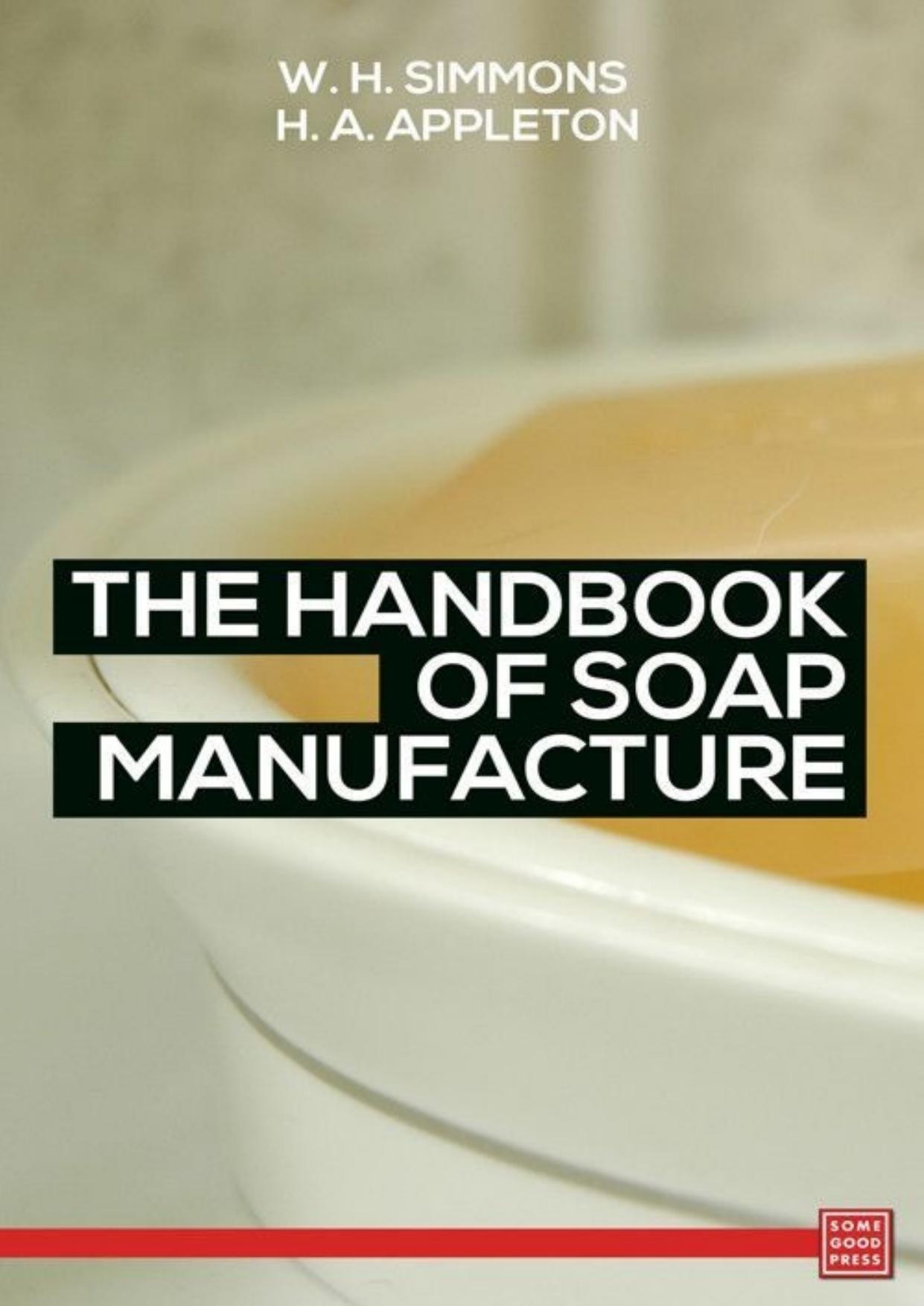The Handbook of Soap Manufacture by W. H. Simmons & H. A. Appleton

Author:W. H. Simmons & H. A. Appleton
Language: eng
Format: azw3, epub, pdf
Publisher: Some Good Press
Published: 2015-03-12T04:00:00+00:00
CHAPTER VIII
SOAP PERFUMES
Essential Oils—Source and Preparation—Properties—Artificial and Synthetic Perfumes.
The number of raw materials, both natural and artificial, at the disposal of the perfumer, has increased so enormously during recent years that the scenting of soaps has now become an art requiring very considerable skill, and a thorough knowledge of the products to be handled. Not only does the all-important question of odour come into consideration, but the action of the perfumes on the soap, and on each other, has also to be taken into account. Thus, many essential oils and synthetic perfumes cause the soap to darken rapidly on keeping, e.g., clove oil, cassia oil, heliotropin, vanillin. Further, some odoriferous substances, from their chemical nature, are incompatible with soap, and soon decompose any soap to which they are added, while in a few cases, the blending of two unsuitable perfumes results, by mutual reaction, in the effect of each being lost. In the case of oils like bergamot oil, the odour value of which depends chiefly on their ester content, it is very important that these should not be added to soaps containing much free alkali, as these esters are readily decomposed thereby. Some perfumes possess the property of helping the soap to retain other and more delicate odours considerably longer than would otherwise be possible. Such perfumes are known as "fixing agents" or "fixateurs," and among the most important of these may be mentioned musk, both natural and artificial, civet, the oils of Peru balsam, sandalwood, and patchouli, and benzyl benzoate.
The natural perfumes employed for addition to soaps are almost entirely of vegetable origin, and consist of essential oils, balsams, and resins, animal perfumes such as musk, civet, and ambergris being reserved principally for the preparation of "extraits".
As would be expected with products of such diverse character, the methods employed for the preparation of essential oils vary considerably. Broadly speaking, however, the processes may be divided into three classes—(1) expression, used for orange, lemon, and lime oils; (2) distillation, employed for otto of rose, geranium, sandalwood, and many other oils; and (3) extraction, including enfleurage, by which the volatile oil from the flowers is either first absorbed by a neutral fat such as lard, and then extracted therefrom by maceration in alcohol, or directly extracted from the flowers by means of a volatile solvent such as benzene, petroleum ether, or chloroform. The last process undoubtedly furnishes products most nearly resembling the natural floral odours, and is the only one which does not destroy the delicate fragrance of the violet and jasmine. The yield, however, is extremely small, and concrete perfumes prepared in this way are therefore somewhat costly.
The essential oils used are derived from upwards of twenty different botanical families, and are obtained from all parts of the world. Thus, from Africa we have geranium and clove oils; from America, bay, bois de rose, Canadian snake root, cedarwood, linaloe, peppermint, petitgrain, and sassafras; from Asia, camphor, cassia, cinnamon, patchouli, sandalwood, star anise, ylang-ylang, and the grass oils, viz., citronella,
Download
The Handbook of Soap Manufacture by W. H. Simmons & H. A. Appleton.epub
The Handbook of Soap Manufacture by W. H. Simmons & H. A. Appleton.pdf
This site does not store any files on its server. We only index and link to content provided by other sites. Please contact the content providers to delete copyright contents if any and email us, we'll remove relevant links or contents immediately.
| Automotive | Engineering |
| Transportation |
Whiskies Galore by Ian Buxton(41524)
Introduction to Aircraft Design (Cambridge Aerospace Series) by John P. Fielding(32884)
Small Unmanned Fixed-wing Aircraft Design by Andrew J. Keane Andras Sobester James P. Scanlan & András Sóbester & James P. Scanlan(32569)
Craft Beer for the Homebrewer by Michael Agnew(17927)
Turbulence by E. J. Noyes(7690)
The Complete Stick Figure Physics Tutorials by Allen Sarah(7135)
Kaplan MCAT General Chemistry Review by Kaplan(6589)
The Thirst by Nesbo Jo(6432)
Bad Blood by John Carreyrou(6271)
Modelling of Convective Heat and Mass Transfer in Rotating Flows by Igor V. Shevchuk(6219)
Learning SQL by Alan Beaulieu(6029)
Weapons of Math Destruction by Cathy O'Neil(5823)
Man-made Catastrophes and Risk Information Concealment by Dmitry Chernov & Didier Sornette(5641)
Digital Minimalism by Cal Newport;(5388)
Life 3.0: Being Human in the Age of Artificial Intelligence by Tegmark Max(5182)
iGen by Jean M. Twenge(5156)
Secrets of Antigravity Propulsion: Tesla, UFOs, and Classified Aerospace Technology by Ph.D. Paul A. Laviolette(4974)
Design of Trajectory Optimization Approach for Space Maneuver Vehicle Skip Entry Problems by Runqi Chai & Al Savvaris & Antonios Tsourdos & Senchun Chai(4837)
Electronic Devices & Circuits by Jacob Millman & Christos C. Halkias(4739)
